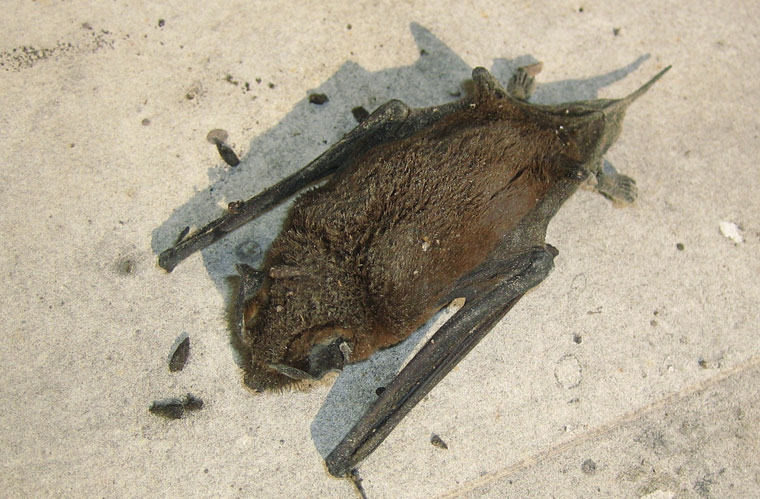- info@wildlife-removal.com
Call us for help in your town
Wildlife Removal Education
What do I need to do after removing bats from my house?
Need bat removal in your hometown? We service over 500 USA locations! Click here to hire us in your town and check prices - updated for year 2020.
Once you've gotten rid of the bats in your attic, or elsewhere in your home, the hard work really starts. We're very sorry if you thought that removing the animals would be enough; there is much more work to be done yet.

You will need to clean up the bat guano, more commonly known as bat droppings, to remove the chance of a histoplasmosis breakout. Guano is also quite corrosive, so a long-term problem can see the "melting-away" of floors, ceilings, and other materials that it comes into contact with. Both guano and urine can both stain too, and the added moisture is also likely to cause mould. That brings along a number of health hazards all by itself — you must resolve a mould problem immediately.
You will also need to keep a good eye out for bat bugs. They can live wherever bats live, requiring the blood of bats in order to survive. These parasites can live for up to a year without any hosts being present, biting on people occasionally to survive. The good news is that human blood doesn't keep the bugs alive for long. Without bat hosts, they will die off, but it can take up to a year or so for that to happen.
You're not done yet, sadly. You'll need to look for dead bats next. Whenever there are living pests, there will also be dead pests. That's especially the case if disease, such as white-nose syndrome, has made its way through the roost. Sick, injured or rabid bats are most commonly kicked out of the colony to prevent the rest from getting sick too, making them difficult to find. They won't be where you found all of the other bat signs.
Only when you can be sure that all bats have been removed from the building, both dead and alive, can you then go ahead to seal up the property. If you have used exclusion devices (or a professional who knows what they are doing), these exclusion devices will have worked to get rid of adult bats, as well as the young bats that you waited to mature. The devices themselves will only be placed on a couple of the entry/exit holes — the most used ones. All other holes are sealed during this time, to ensure that bats are being funneled out only, the odd one or two not free to fly back in.
Go back to the Bat Removal page, or learn about bats in the attic with my Bats in the Attic guide.


















